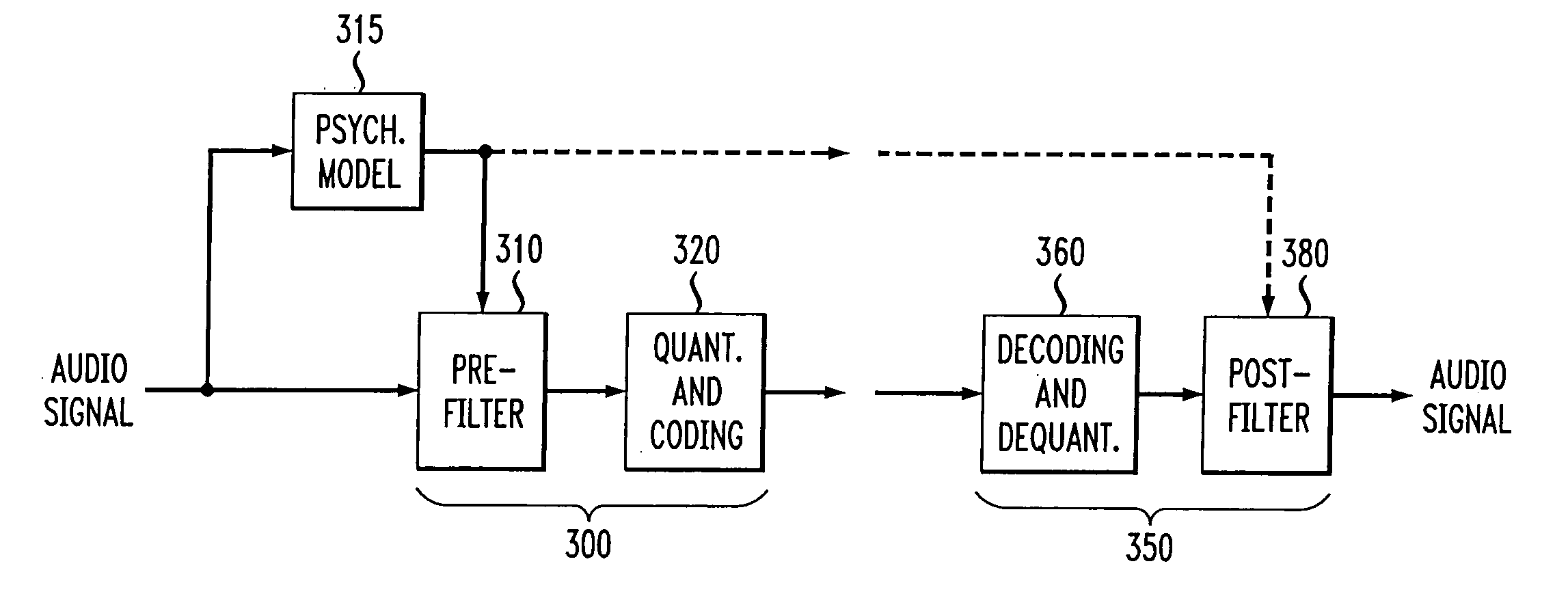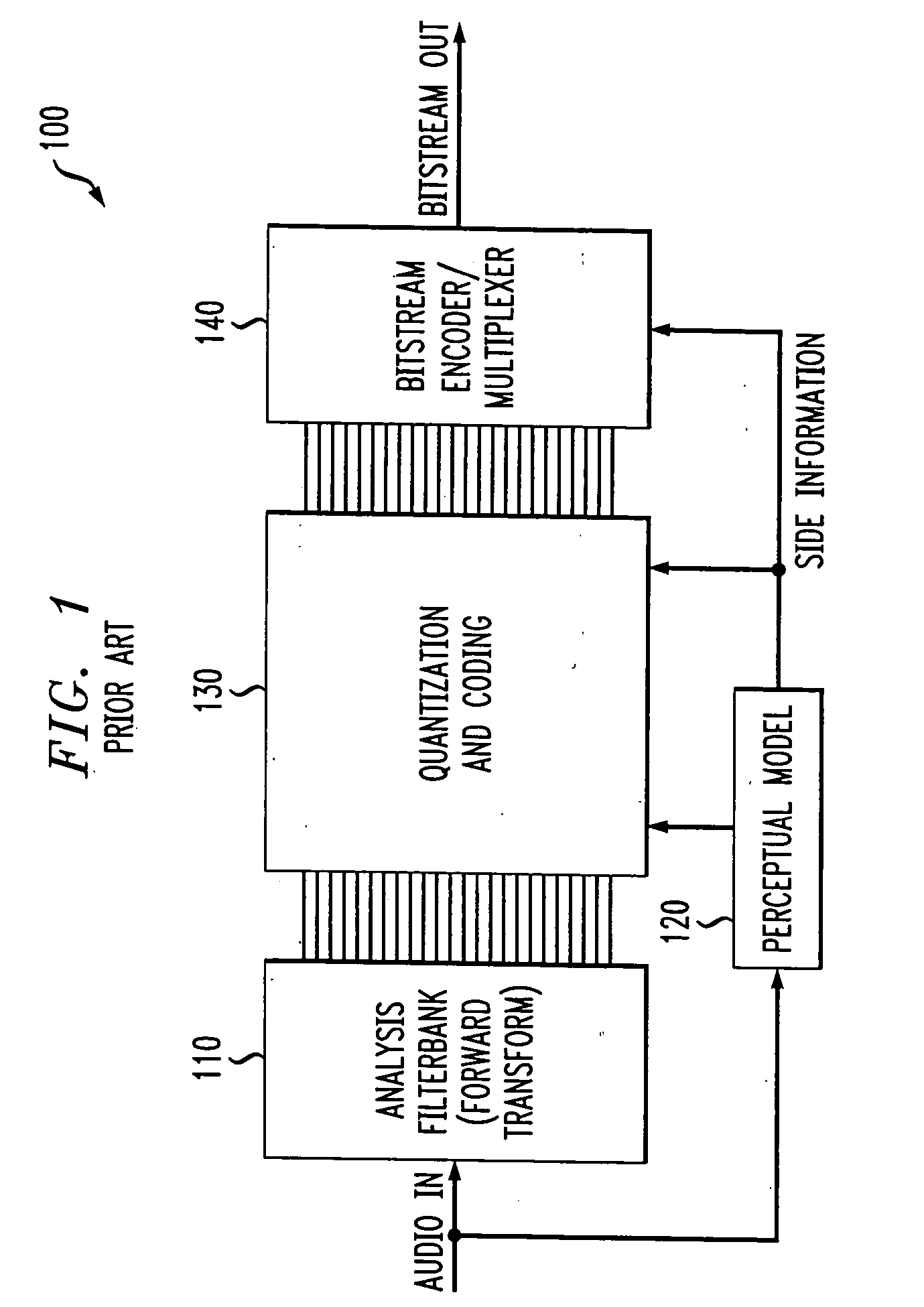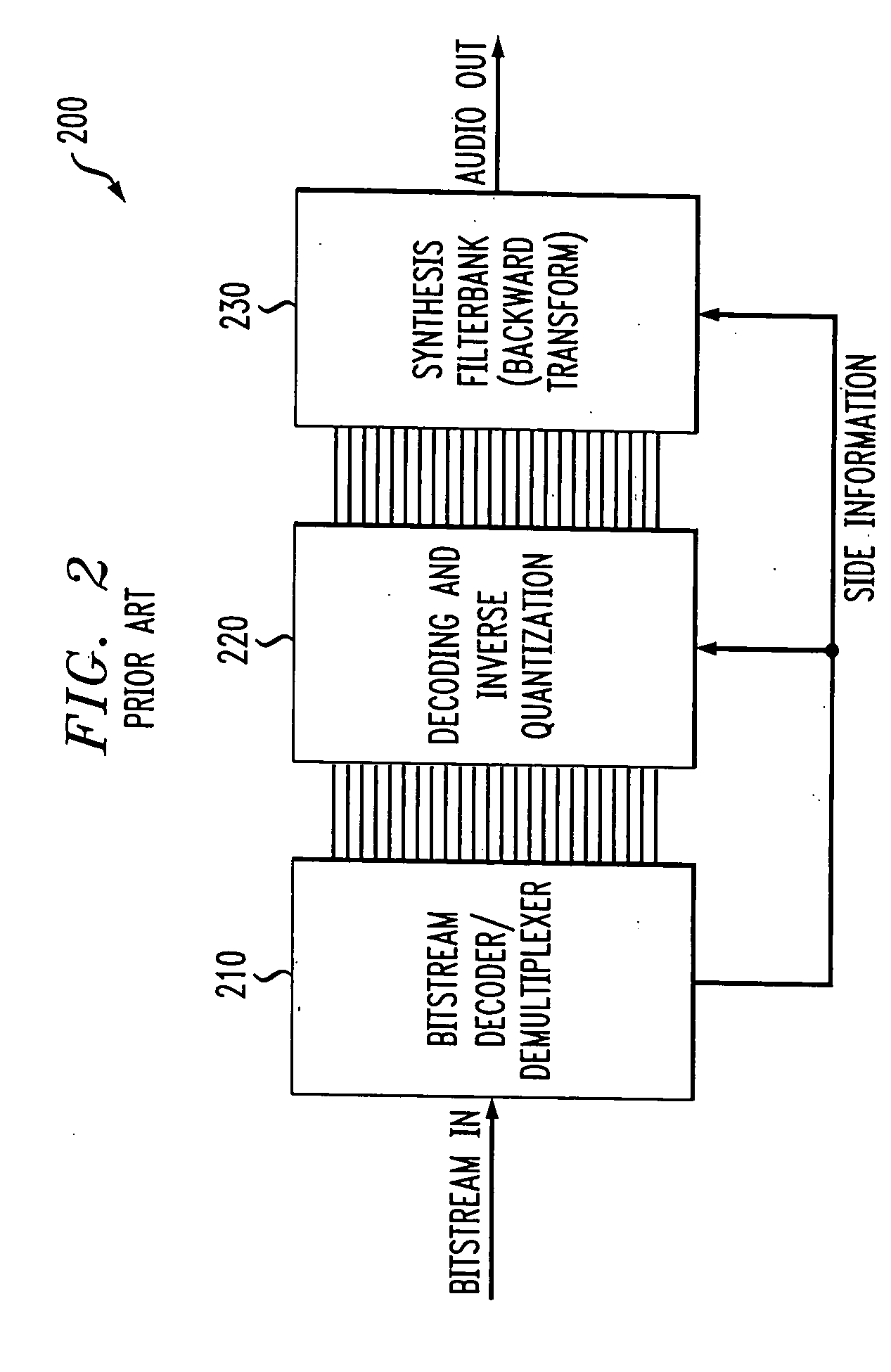Perceptual coding of image signals using separated irrelevancy reduction and redundancy reduction
- Summary
- Abstract
- Description
- Claims
- Application Information
AI Technical Summary
Benefits of technology
Problems solved by technology
Method used
Image
Examples
Embodiment Construction
[0023] The present invention provides methods and apparatus for perceptual coding of image signals. While the present invention is primarily illustrated herein in the context of audio signals, the techniques of the present invention are applicable to the encoding of image signals as well, as would be apparent to a person of ordinary skill in the art.
[0024]FIG. 3 is a schematic block diagram of a perceptual audio coder 300 according to the present invention and its corresponding perceptual audio decoder 350, for communicating an audio signal, such as speech or music. While the present invention is illustrated using audio signals, it is noted that the present invention can be applied to the coding of other signals, such as the temporal, spectral, and spatial sensitivity of the human visual system, as would be apparent to a person of ordinary skill in the art, based on the disclosure herein.
[0025] According to one feature of the present invention, the perceptual audio coder 300 separ...
PUM
 Login to View More
Login to View More Abstract
Description
Claims
Application Information
 Login to View More
Login to View More - R&D
- Intellectual Property
- Life Sciences
- Materials
- Tech Scout
- Unparalleled Data Quality
- Higher Quality Content
- 60% Fewer Hallucinations
Browse by: Latest US Patents, China's latest patents, Technical Efficacy Thesaurus, Application Domain, Technology Topic, Popular Technical Reports.
© 2025 PatSnap. All rights reserved.Legal|Privacy policy|Modern Slavery Act Transparency Statement|Sitemap|About US| Contact US: help@patsnap.com



